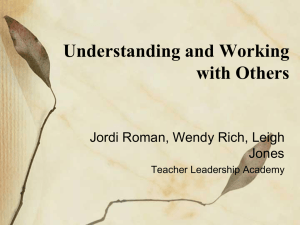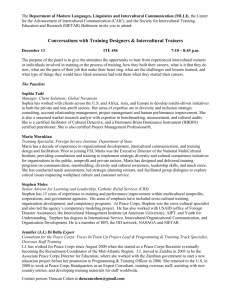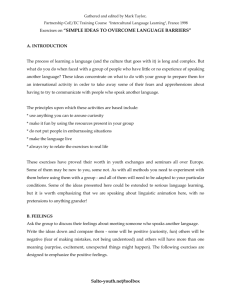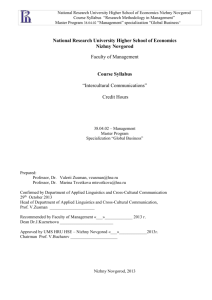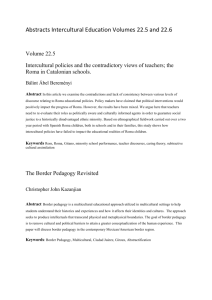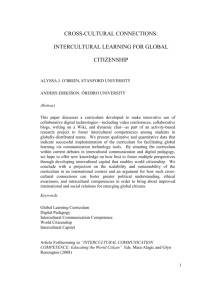CSK 1202 CROSS
advertisement
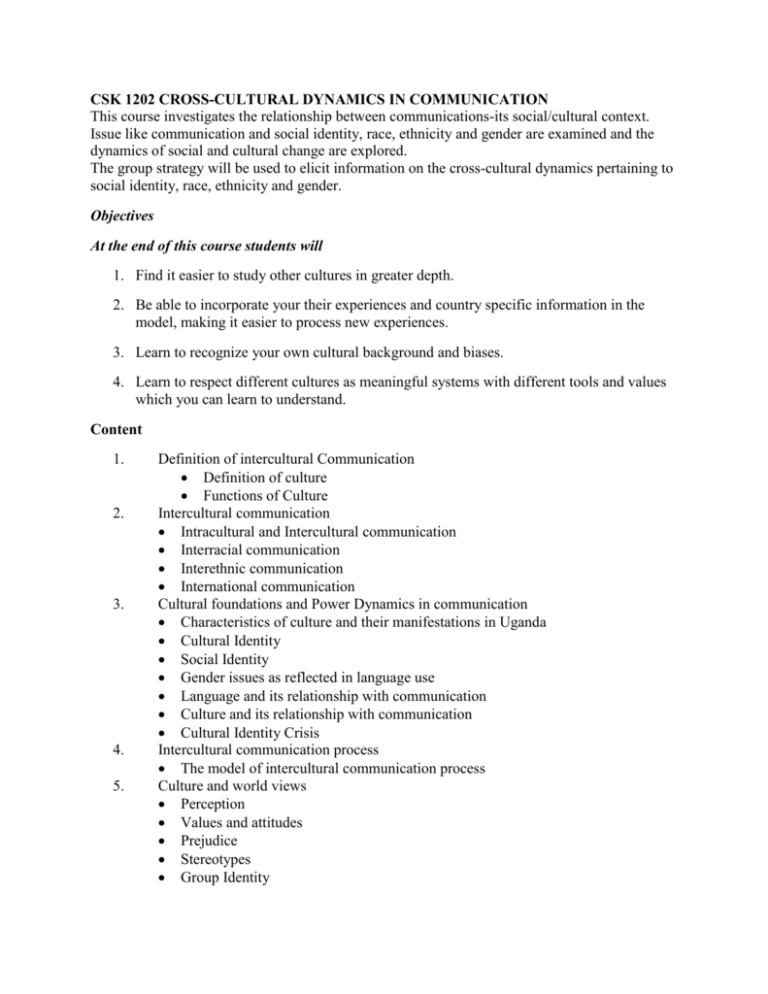
CSK 1202 CROSS-CULTURAL DYNAMICS IN COMMUNICATION This course investigates the relationship between communications-its social/cultural context. Issue like communication and social identity, race, ethnicity and gender are examined and the dynamics of social and cultural change are explored. The group strategy will be used to elicit information on the cross-cultural dynamics pertaining to social identity, race, ethnicity and gender. Objectives At the end of this course students will 1. Find it easier to study other cultures in greater depth. 2. Be able to incorporate your their experiences and country specific information in the model, making it easier to process new experiences. 3. Learn to recognize your own cultural background and biases. 4. Learn to respect different cultures as meaningful systems with different tools and values which you can learn to understand. Content 1. 2. 3. 4. 5. Definition of intercultural Communication Definition of culture Functions of Culture Intercultural communication Intracultural and Intercultural communication Interracial communication Interethnic communication International communication Cultural foundations and Power Dynamics in communication Characteristics of culture and their manifestations in Uganda Cultural Identity Social Identity Gender issues as reflected in language use Language and its relationship with communication Culture and its relationship with communication Cultural Identity Crisis Intercultural communication process The model of intercultural communication process Culture and world views Perception Values and attitudes Prejudice Stereotypes Group Identity 6. 7. 8. Approaches to and Theories of Intercultural communication Positivist approach Uncertainty reduction theory Humanist approach Systems approach Intercultural transformation theory Practical exercises on problems cases in intercultural communication Case studies in intercultural communication Learning Outcomes: By the end of this course students should be able to: 1. Define and understand culture in the broader context of communication 2. Appreciate effect of culture on how people communicate 3. Communicate in different cultural contexts Course assessment: Extended coursework essay} Group presentation} = 30% Test} Final Comprehensive Examination = 70% (End of Semester) Instruction methods: Lectures Case Studies Group Discussion and Class Presentations Activity Research Work References: 1. Thomas Anderson: Sociology: The Study Of Human Relationships, 3rd Edition, HBJ 1982 2. David B.Brinkerluff and Lynn K.White Sociology, 2nd Edition West Publishing Company, 1998 3. Dennis, Houghton: Understanding Mass Communication, Mifflin Co Boston, 4th Edition 1991 4. Edited By Simon During: The Cultural Studies Reader, 2nd Edition Routledye Company London and New York 2003 5. Agner Fog ,Kluner: Cultural Selection , Academic Publishers 1999 6. Edited By Robin Dunbar, Chris Knight and Camilla: The Evolution of Culture and Power, Rutgers 1st Edition, Umurs Press New Jersey 1999 7. Edited By Vijayendra Rao and Michael Walton: Culture and Public Action: Stanford California 2004 8. Kevin Hethering Ted Expressions of Identity: Space Performance Politics, Sage Publications London, 1998 9. Victor De Munck Culture, Self and Meaning, Prospect Heights, Illinois, 2000 10. Bobbye D.Sorrels Business Communication Fundamentals, 1st Edition Merill Publishing Company 1984 11. Lesikar Pettit Business Communication: Theory and Application 6th Edition A.I.T.B.S Publishers 1999






